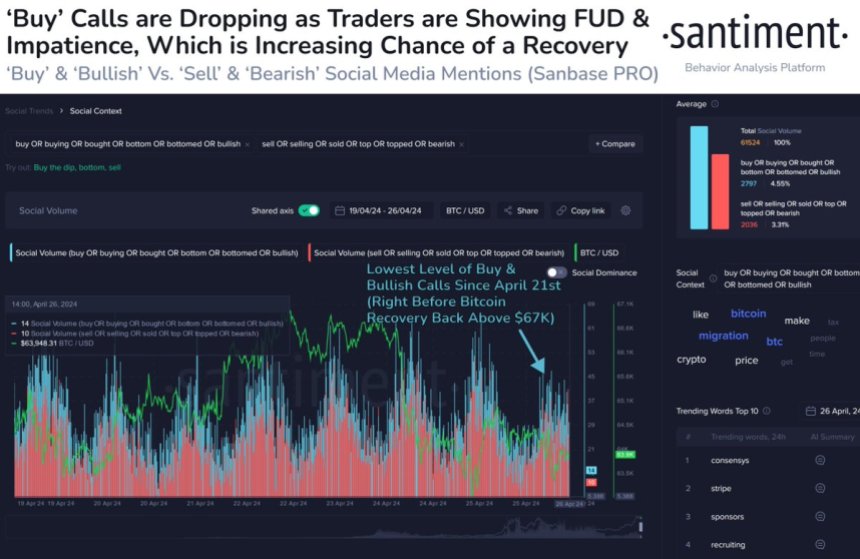
2024-4-24 18:30 |
Bitcoin (BTC) witnessed a modest decrease over the past week, closing at approximately $65,000, down 1.1% from $65,650 the previous week.
The cryptocurrency experienced a significant dip mid-week, dropping below $60,000, but recovered strongly in the latter half, settling close to its opening value.
Challenges in the ETF marketThis period also saw stagnant demand for Bitcoin Exchange-Traded Funds (ETFs), marking the continuation of a recent trend with net outflows totaling about $205 million for the week.
This represents the first instance of consecutive weekly outflows since the inception of BTC ETFs, although the cumulative demand remains high with about $12.3 billion in net inflows and an impressive $226 billion in total trading volume since their launch.
Impact of the Bitcoin halvingOver the weekend, Bitcoin underwent its fourth halving event, a critical mechanism designed to reduce the block rewards from 6.25 to 3.125 BTC per block. Such halvings are pivotal moments for Bitcoin, signaling its maturing ecosystem and affecting both the mining community and market dynamics.
Halving events are known to typically impact the price and mining activities due to the reduced reward for mining new blocks.
Evolution of Bitcoin miningThe mining industry has seen substantial evolution since Bitcoin’s inception, transitioning from a niche hobby to a significant industrial operation. Initially set at 50 BTC, block rewards have progressively decreased, compelling miners to adopt more sophisticated and efficient technologies. Today, Bitcoin mining is characterized by strategic operations that utilize advanced hardware, incorporate renewable energy sources, and implement risk management strategies to sustain profitability.
Matteo Greco, Research Analyst at the digital asset and fintech investment business Fineqia International says,Following a halving event, it’s common to observe a short-term decrease in the total hashrate as miners adjust their operations. The next BTC difficulty adjustment, scheduled for April 24th and occurring every two weeks, aims to maintain a consistent average block time despite fluctuations in the network’s hashrate. A decline in total hashrate post-halving shouldn’t be interpreted as a sign of stress within the mining industry but rather as a typical response to the event. Over time, the hashrate is expected to rebound as miners enhance efficiency and competition intensifies. A higher hashrate enhances network security, as the computational power required for a chain attack increases, making such attacks more costly.
The post Bitcoin halving event bolsters resilience amid market fluctuations appeared first on Invezz
origin »Bitcoin (BTC) на Currencies.ru
|
|































